This mold was one of several found nearby, leading archaeologists to believe that this site served as an artisanal mask factory starting in the first century B.C.E.
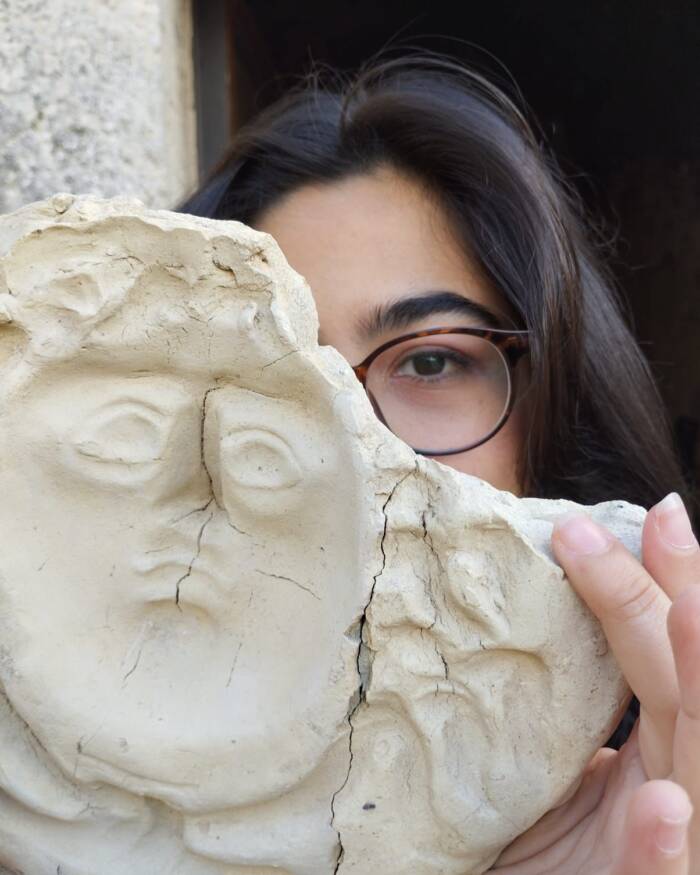
Archaeological and Landscape Park of the Valley of the TempleThe ancient mold once used to make masks depicting the Gorgon Medusa.
Archaeologists exploring the ancient ruins of Finziade, the last Greek colony on the island of Sicily, recently discovered a mold used to create masks depicting the mythological Gorgon Medusa during the first century B.C.E.
The mold was found in a structure known as “House 18,” originally built as a residence during the second century B.C.E. and later converted to an artisan workshop. Archaeologists who participated in the excavation noted that this building is a perfect example of how residential buildings were repurposed during a time of significant economic growth for the Roman Republic.
The presence of other mask molds at the site further suggests that the manufacture of theatre masks had likely been of some importance to the local economy, which provides new insight into the social, economic, and religious facets of everyday life in Roman Sicily.
The Unique Discovery Of An Ancient Mold Used To Make Medusa Masks In Sicily
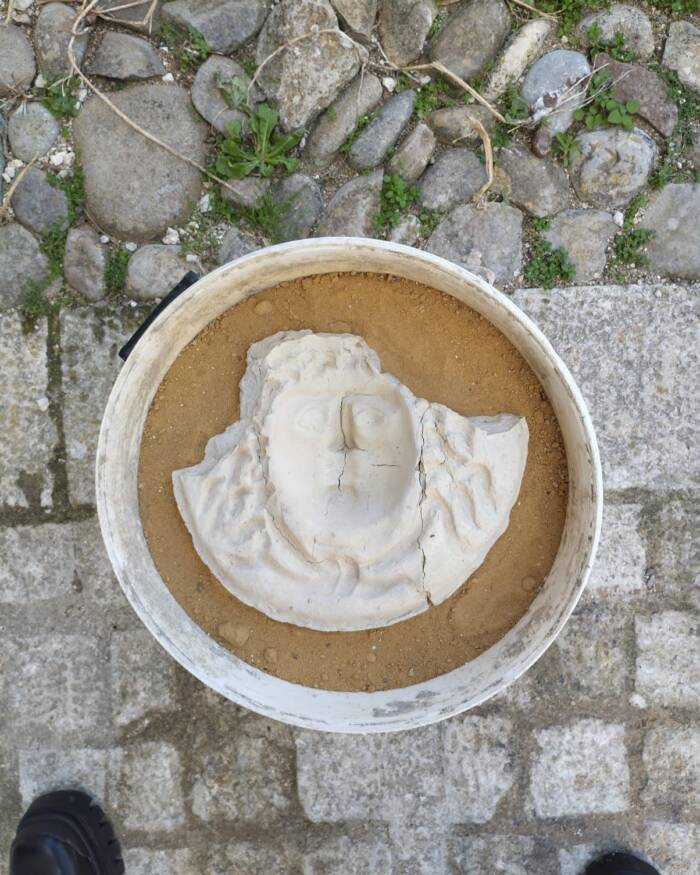
Archaeological and Landscape Park of the Valley of the TempleThe Medusa mask mold as seen in a pot, for scale.
News of the discovery was shared by the Archaeological and Landscape Park of the Valley of the Temple in a post on Facebook, where the archaeologists identified the ancient mask mold, noting that it is “probably depicting Medusa.”
In mythology, Medusa was a Gorgon, a monstrous creature with a gaze that could turn anyone to stone, often depicted with snakes for hair. But while most modern depictions focus on this monstrous aspect of Medusa, the original tale frames her in a fairly tragic light.
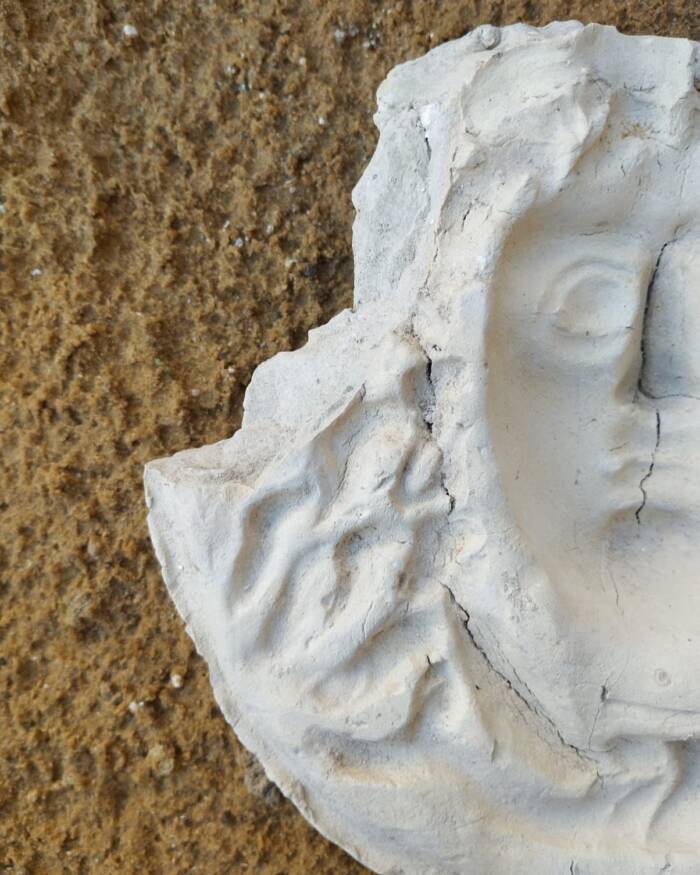
Archaeological and Landscape Park of the Valley of the TempleA detail of the left half of the Medusa mask mold.
Originally, Medusa was said to be a beautiful mortal woman, unlike her immortal Gorgon sisters, Stheno and Euryale. According to Ovid’s Metamorphoses, Medusa was transformed into a monster by the goddess Athena as punishment after being violated by Poseidon in Athena’s temple. Her beauty became her curse, with her hair replaced by writhing serpents and her face carrying a petrifying curse.
The most well-known story involving Medusa is that of Perseus, the hero tasked with slaying her. Using a reflective shield gifted to him by Athena, winged sandals, a cap of invisibility, and a curved sword, Perseus dodged Medusa’s gaze and beheaded her. From her severed neck sprang Pegasus, the winged horse, and Chrysaor, a golden giant.
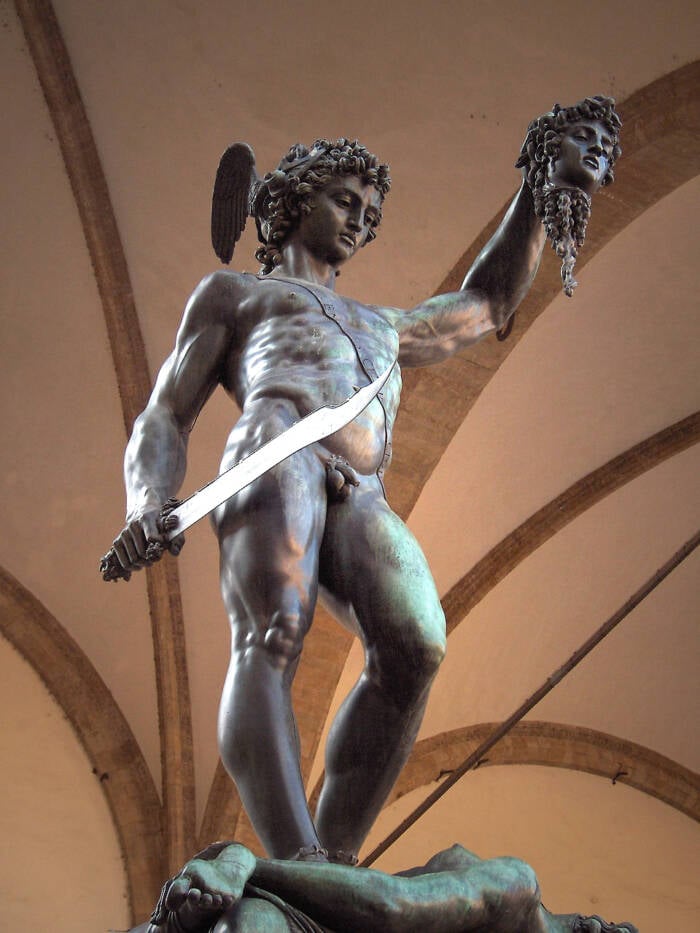
Wikimedia CommonsA statue of Perseus holding the head of Medusa.
Despite being widely regarded as a monster, symbolism related to Medusa in Greek and Roman culture did not necessarily carry negative connotations. While her visage could often be used to instill terror, it was also seen as a symbol of protection, her head appearing on armor, shields, coins, and various other artifacts used to ward off evil.
The presence of this mold in House 18, along with others, is representative of Roman Sicily during the Republican era as a melting pot of cultures, where Greek, Roman, and local influences intersected.
How The Culture Of Ancient Sicily Became A Blend Of Greek, Roman, And Local Influences
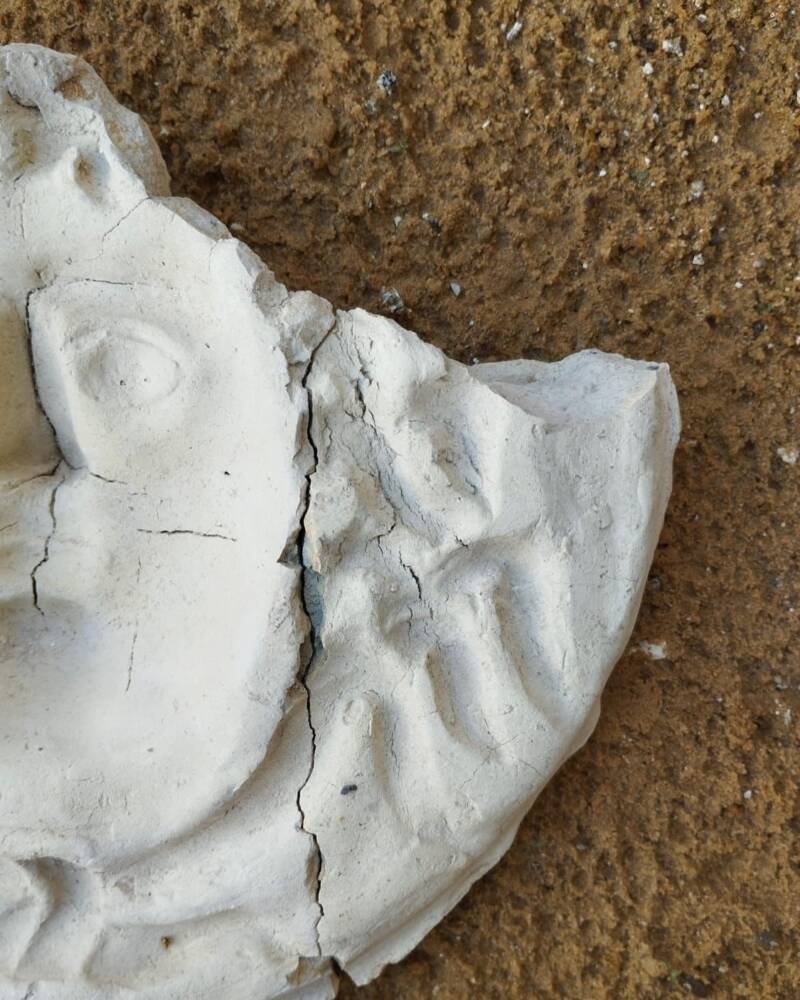
Archaeological and Landscape Park of the Valley of the TempleDetail of the right half of the mold.
“Of all foreign nations Sicily was the first who joined herself to the friendship and alliance of the Roman people,” the historian and philosopher Cicero once wrote.
“She was the first to be called a province; and the provinces are a great ornament to the empire. She was the first who taught our ancestors how glorious a thing it was to rule over foreign nations. She alone has displayed such good faith and such good will towards the Roman people, that the states of that island which have once come into our alliance have never revolted afterwards, but many of them, and those the most illustrious of them, have remained firm to our friendship for ever.”
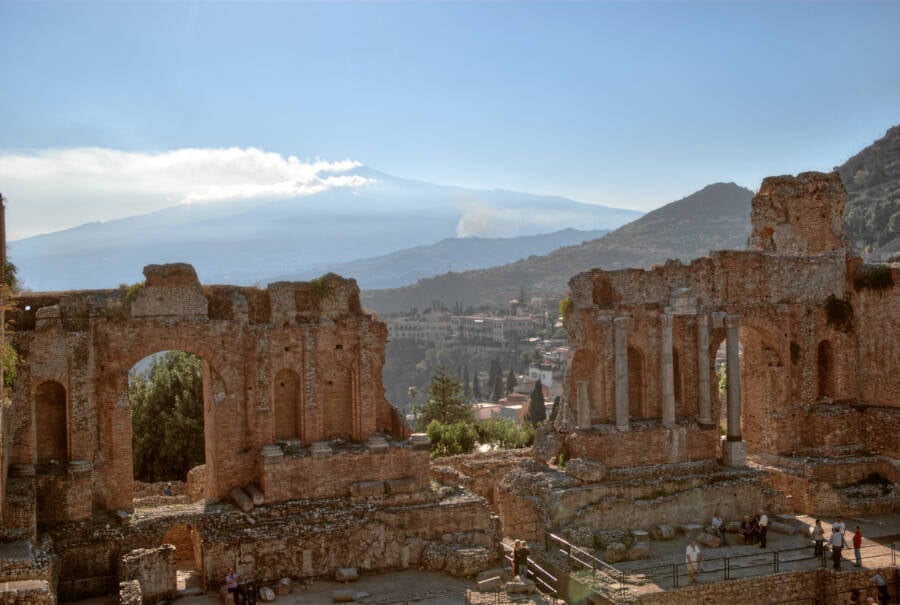
Wikimedia CommonsA Greco-Roman theatre in Taormina, Sicily.
As the site Wonders of Sicily explains, Sicily was an important location where cultures of the ancient world converged as they never had before. As a colony of the ancient Greeks dating back to the eighth century B.C.E., the island was naturally heavily influenced by Greek culture.
When the Romans took control of Sicily during the Punic Wars in the third century B.C.E., they inherited this Greek-influenced society and added their own administrative and cultural structures. Sicily became Rome’s first province in 241 B.C.E., serving as a vital granary for the Republic.
Roman governors managed the island, enforcing Roman law while maintaining many of its existing Greek traditions. However, the Greek language continued to be widely spoken, and Greek traditions of education, philosophy, and religion remained influential, even as Roman customs were gradually introduced.
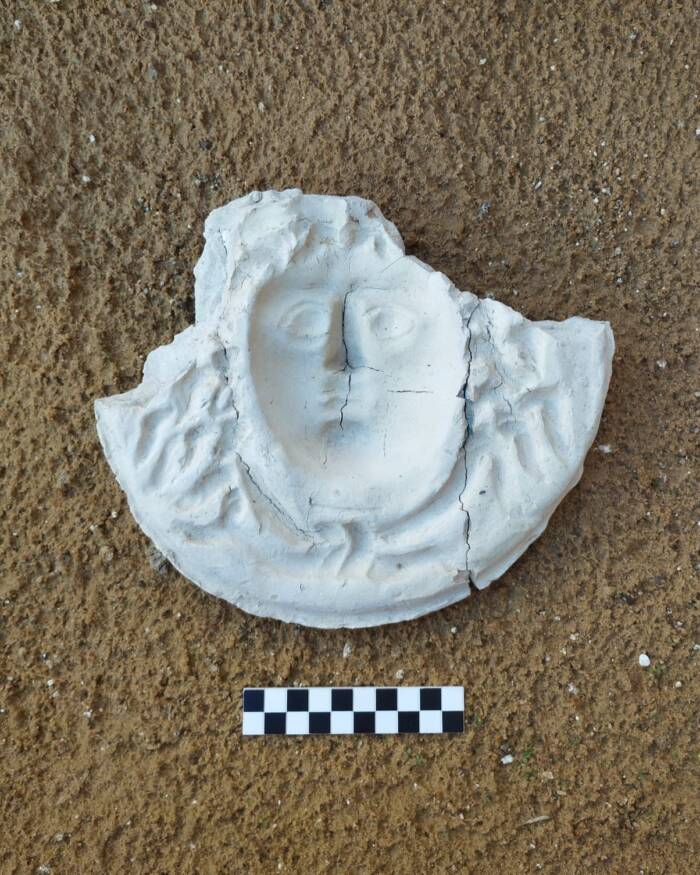
Archaeological and Landscape Park of the Valley of the TempleThe Medusa mask mold illustrates the blending of Greek and Roman cultures on the island of Sicily.
Greek gods like Demeter and Persephone were worshipped alongside Roman deities, often blending into syncretic forms. Similarly, the island’s art and architecture during this period showed a mix of Greek styles with Roman innovations, such as mosaics and amphitheaters.
The discovery of the Medusa mask mold highlights this fascinating blend of ancient cultures, showcasing Sicily as one of the ancient world’s most unique places.
After reading about the discovery of this Medusa mask mold, learn about 33 other fascinating creatures from ancient mythology. Then, learn all about the Greek gods of the Olympian pantheon.





